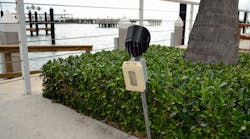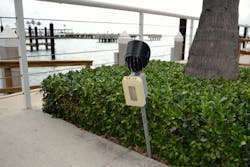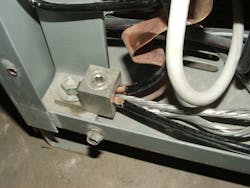How well do you know the Code? Think you can spot violations the original installer either ignored or couldn’t identify? Here's your chance to moonlight as an electrical inspector and second-guess someone else's work from the safety of your living room or office. Can you identify the specific Code violation(s) in this photo? Note: Submitted comments must include specific references from the 2020 NEC.
Hint: PVC conduit calamity
Tell Them What They've Won…
Using the 2020 NEC, correctly identify the Code violation(s) in this month's photo — in 200 words or less — and you could win an Arlington Industries SL1B18 SLIDER BAR kit, which includes a stainless steel trap door cover and a 20A decorator-style, tamper-resistant receptacle. E-mail your response, including your name and mailing address, to [email protected], and Russ will select three winners (excluding manufacturers and prior winners) at random from the correct submissions. Note that submissions without an address will not be eligible to win.
July Winners
Our winners this month were: Terry Whisenhunt, a limited plant supervising electrician in La Pine, Ore; Shane Sinda, a reader from Oxford, Mich.; and Terry A. Steen, P.E., state review electrical engineer in Richmond, Va. They all knew that intermixing aluminum and copper conductors in the same terminal is a violation of Sec. 110.14 unless the terminal is specifically identified for this purpose. This terminal is not identified for intermixing copper conductors with aluminum conductors. They also knew that shoving four conductors into a terminal designed for only one violates Sec. 110.14(A).
Another problem I want to point out is the lack of a terminal bar for connecting all the grounding and bonding conductors in this transformer. Section 450.10(A) requires a terminal bar to be bonded to the enclosure and secured inside the transformer enclosure so as not to cover any vented portion of the enclosure. The use of antioxidants on the aluminum conductors is not a Code requirement, and the lack of its use here is not necessarily a Code violation unless “required” per the manufacturer’s instructions. I have seen manufacturer’s “recommendations” for using antioxidants but have not seen any of their “requirements” for using it.






